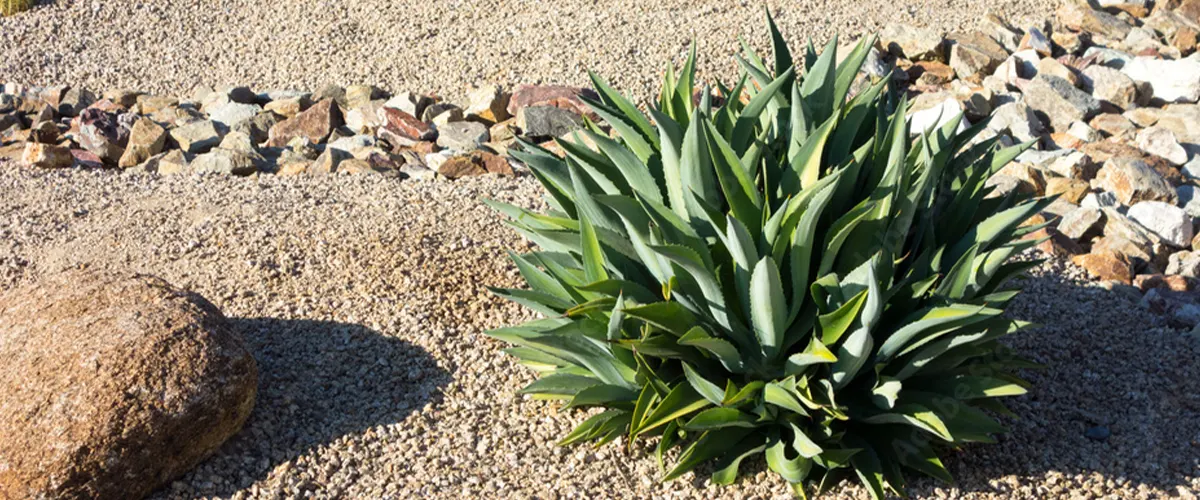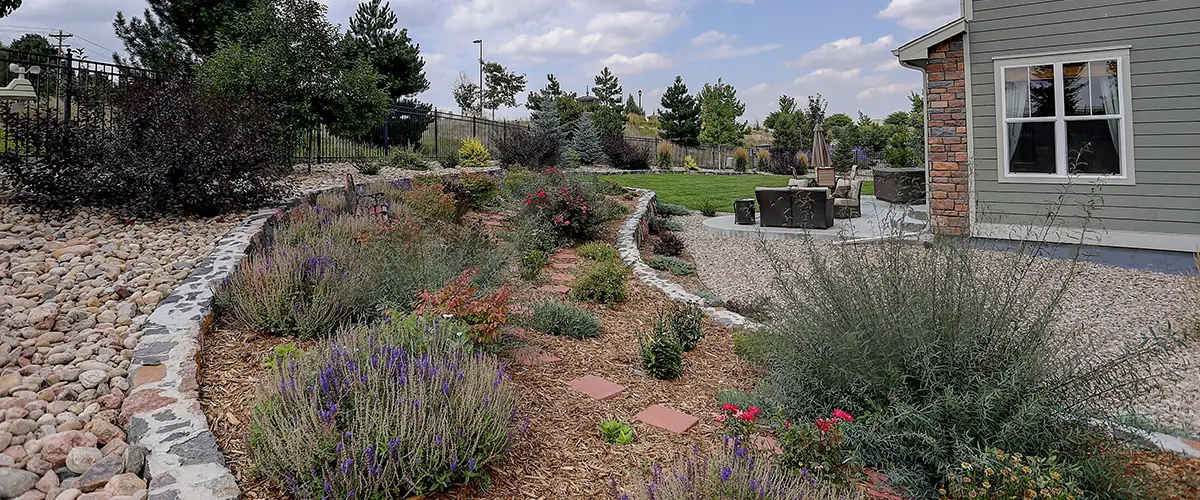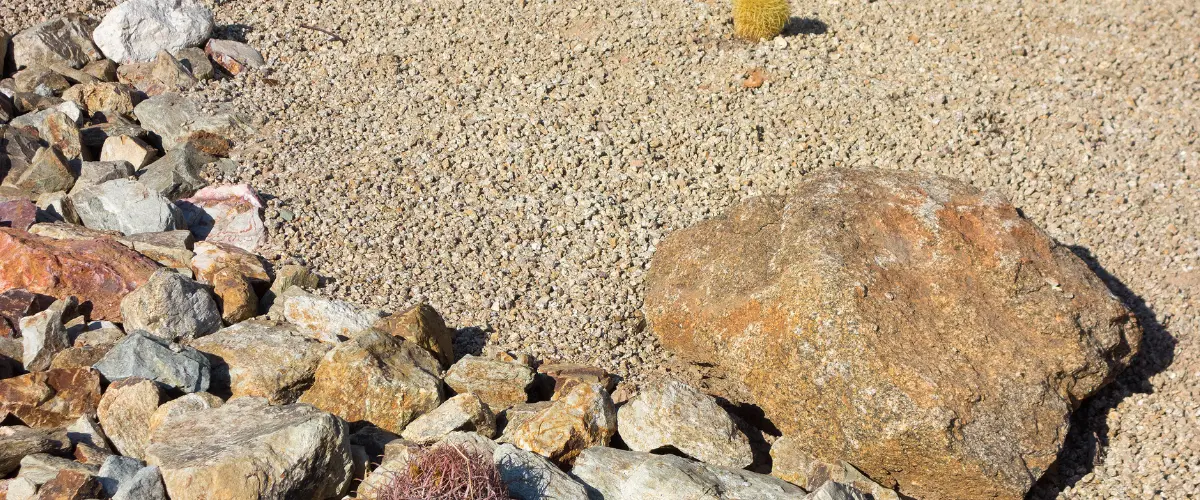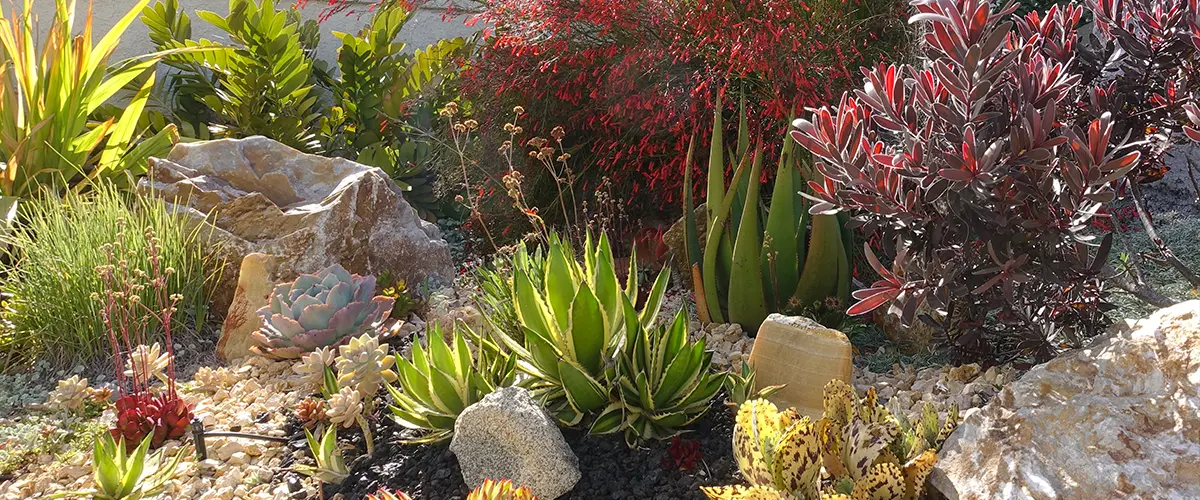Want to save money and water around your home? Xeriscaping, a type of landscaping that uses plants and other materials adapted to your local climate, is one way to do that.
However, be careful to distinguish the process of xeriscaping from zeroscaping if you want to enjoy a beautiful green yard with plants and flowers. Learn more about the differences between these landscaping approaches and some ideas to create your beautiful xeric backyard.
Zeroscape Versus Xeriscape: What's The Difference?
Zeroscape: A Simple Landscape, With Stones And No Plants
A zeroscape is a landscape design made entirely of dirt or gravel with few or no plants. Because few plants can survive in such hot and dry climates, these are also popular in desert areas. Because zeroscape landscapes require no planning or design, you won’t necessarily need to hire a landscaper if you go this route.
If you add plants, your yard will be made of gravel, regular soil, and possibly a few plants here and there. Zeroscape yards are pretty plain, but if you want one of the cheapest, low-maintenance landscape options, zeroscape is your best choice.

Xeriscape: A Green Garden That Preserves The Environment
On the other hand, xeriscape is an organized landscape design that does incorporate plants. However, the key to a xeriscape landscape is using native plants that hardly need water. If you live in a dry climate, xeriscape designs are a great idea to implement because you can have a beautiful yard with little maintenance.
Xeriscaping can also help reduce water usage by up to 50%, using native, drought-tolerant plants and an efficient irrigation system. A xeriscaped yard can look just as good as any traditional garden. You can play with rocks, boulders, decorative stones, and other features.
And the best thing about it, besides the low water requirements, is that its low-maintenance plants will allow you to spend more time with your loved ones and less time caring for the landscape.

Benefits Of Zeroscape Landscaping
Zeroscaping is a landscaping method that focuses on using stones and eliminating the need for plants. This approach reduces water usage and maintenance, making it ideal for arid and semi-arid regions.
In addition to being water-efficient, zeroscaping can significantly cut down on costs related to irrigation and fertilization. This method also helps in preventing soil erosion and conserving the local ecology.
Cost Savings
Reducing the reliance on water and fertilizers translates to financial savings over time. Initial investment in zeroscaping can be offset by the reduced ongoing costs, making it a cost-effective landscaping solution in the long run.
Low Maintenance
With fewer or no plants to care for, zeroscaping significantly cuts down on garden maintenance duties. There’s less weeding, pruning, and fertilizing required, offering home and business owners the convenience of a beautiful, low-maintenance landscape.
Removing The Need For Water
Zeroscaping drastically reduces water usage by minimizing or eliminating the need for irrigation. This is especially beneficial in arid regions where water resources are scarce and prioritizing conservation efforts is essential for sustainable living.

Benefits Of Xeriscape Landscaping
More Free Time For Your Loved Ones
A Place For Relaxation
Water Conservation

Ideas For Creating Your Own Wonderful Xeric Yard
Change the grass for gravel
Gravel can be replaced for grass in a xeriscape. When you consider the time and effort required to rake and maintain a lush, grassy lawn, xeriscape begins to sound appealing. Consider using gravel and hardscape pavers as an alternative to ground cover in dry or heavily trafficked areas.
Consider seasonal interest
Select plants carefully
According to Love Your Landscape, you should choose your plant material for drought tolerance and for its overall aspect. Since various areas of your property might have different amounts of moisture and sunlight, you should choose plants accordingly. Native plants in your area usually make good xeriscaping choices.
Improve your soil
Tend your xeriscape regularly

Conclusion
Your choice when choosing between zeroscaping and xeriscaping shouldn’t be too hard now. If you still need help deciding, here’s our expert opinion:
- If you're fine with not having any plant on your property, not even low-maintenance ones, choose zeroscaping. You'll only use stones, gravel, boulders, and concrete to give your landscape a nice shape.
- If you want to have at least some plants in your front or backyard, xeriscaping is the perfect choice, especially for the dry Colorado weather. You'll get draught-tolerant plants that don't require water almost at all, making xeriscaping sustainable even in Colorado.
Redoing your entire yard can be challenging to follow on your own. Consider working with a professional landscape architect when you plan to create a xeriscape yard. It is easier for you to get the garden of your dreams and ensure that your specific landscape requirements are met.
At Land Designs By Colton, we match refined creativity with professional installation to give you a perfect xeriscape landscape. As certified landscape architects, we offer xeriscaping and deck building services in Denver, Englewood, Arvada, Centennial, Littleton, and more of Colorado.
